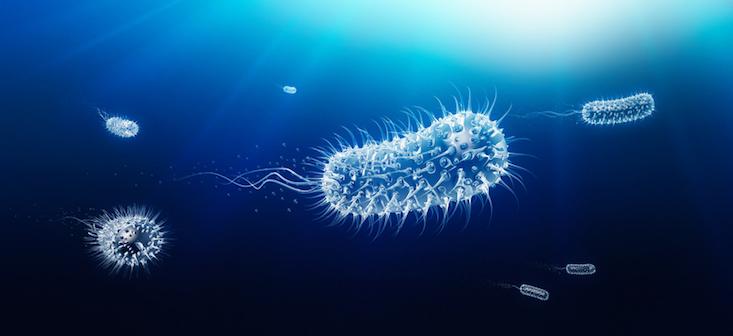Swarming Bacteria Create an “Impossible” Superfluid

Researchers explore a loophole that extracts useful energy from a fluid’s seemingly random motion. The secret? Sugar and asymmetry.
Outside of the imaginations of physics teachers, frictionless devices are hard to come by. But putting a bunch of swimming bacteria into a drop of water achieves just that: a fluid with zero resistance to motion. Incredibly, that resistance (or viscosity, as it’s properly known) can even go negative, creating a self-propelling liquid that might, say, turn a motor in a way that seems to defy the laws of thermodynamics.
Recent work explains how bacteria conspire to pull off the improbable. Physicists have long dreamt of getting something for nothing, even if only in outlandish thought experiments. In the 1860s James Maxwell conjured up an all-knowing demon who could shunt fast air molecules to one side of a room and slow molecules to the other, creating a temperature difference that could power an engine.
With marginally more practicality, in 1962 Richard Feynmanlectured about a microscopic gearthat, when jostled by air molecules, would turn in only one direction, driving a motor. But such ideas are dashed by the Second Law of Thermodynamics, which insists that the sorting or the turning must generate heat that dooms both schemes. As the poet Allen Ginsberg put it, you can’t win, and you can’t break even.
The straightforward conclusion was that the organisms were swimming in a way that neutralized the solution’s internal friction to produce something like a superfluid, a liquid with zero resistance. The apparent thermodynamics violation was an illusion because the bacteria were doing the work to offset or overcome the viscosity.
Source: nautil.us